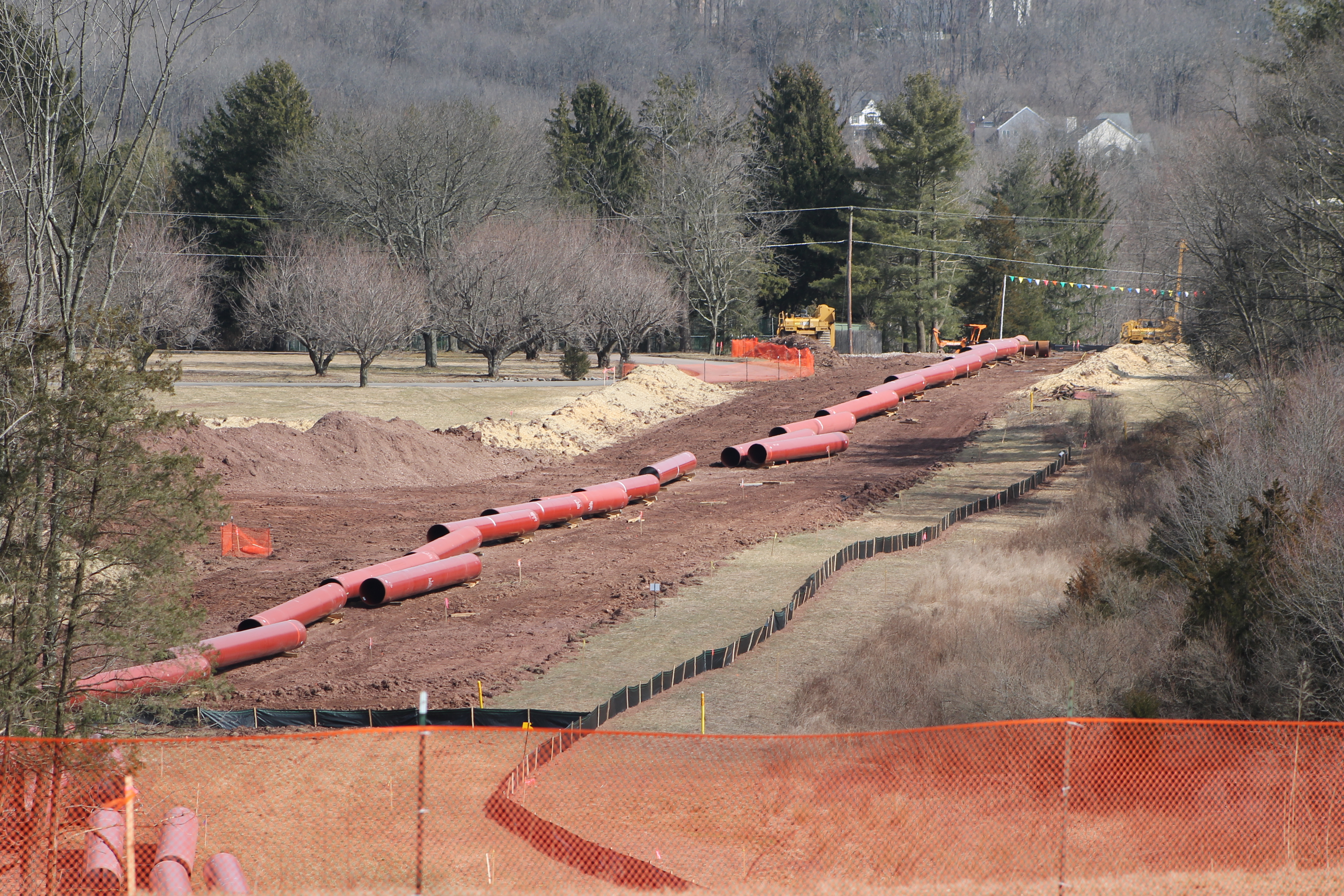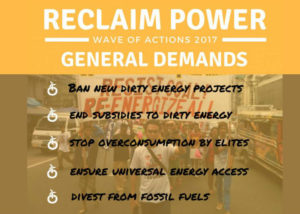 This year again, a wave of people power will roll over the globe, showing that a just transition to a clean, democratic energy system is necessary – and possible!
This year again, a wave of people power will roll over the globe, showing that a just transition to a clean, democratic energy system is necessary – and possible!
Since 2013, Reclaim Power has united organizations from around the world to demand a profound change in our energy systems, stop harmful energy projects and cut money flows to dirty energy.
During the entire month of October 2017, events will be held and groups will demonstrate how widespread and strong worldwide mobilization against the current energy system is.
During this month of resistance and of united actions, Food & Water Watch and Food & Water Europe, both Reclaim Power partners, will again coordinate a global day of action against fracking – the Global Frackdown. On 14 October, various movements in different countries will state a clear NO to dirty fossil fuels extracted by the dangerous method of fracking.
To learn more about this coordinated day of action, visit globalfrackdown.org.
To learn more about Reclaim Power, go to http://www.reclaimpower2017.net/.



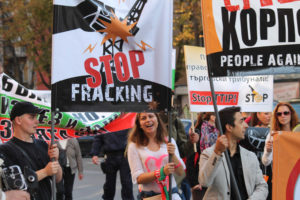
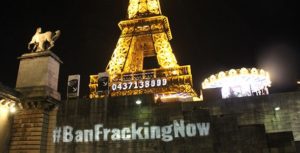
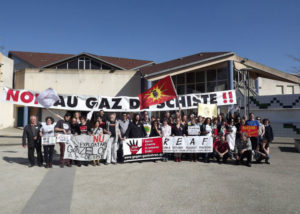 During my last days as an intern here at Food & Water Europe I would like to take you on a tour of the many different victories against fracking in Europe. As drilling has started in Lancashire despite opposition from local communities, it is now more important than ever to stand together in solidarity to not only halt but prevent fracking projects everywhere by banning the technique and promoting the development of clean renewable energy. Here is a run down of the current state of fracking in Europe.
During my last days as an intern here at Food & Water Europe I would like to take you on a tour of the many different victories against fracking in Europe. As drilling has started in Lancashire despite opposition from local communities, it is now more important than ever to stand together in solidarity to not only halt but prevent fracking projects everywhere by banning the technique and promoting the development of clean renewable energy. Here is a run down of the current state of fracking in Europe.
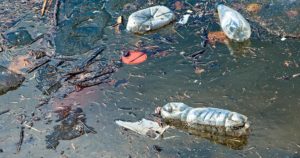 Across the globe,
Across the globe, 